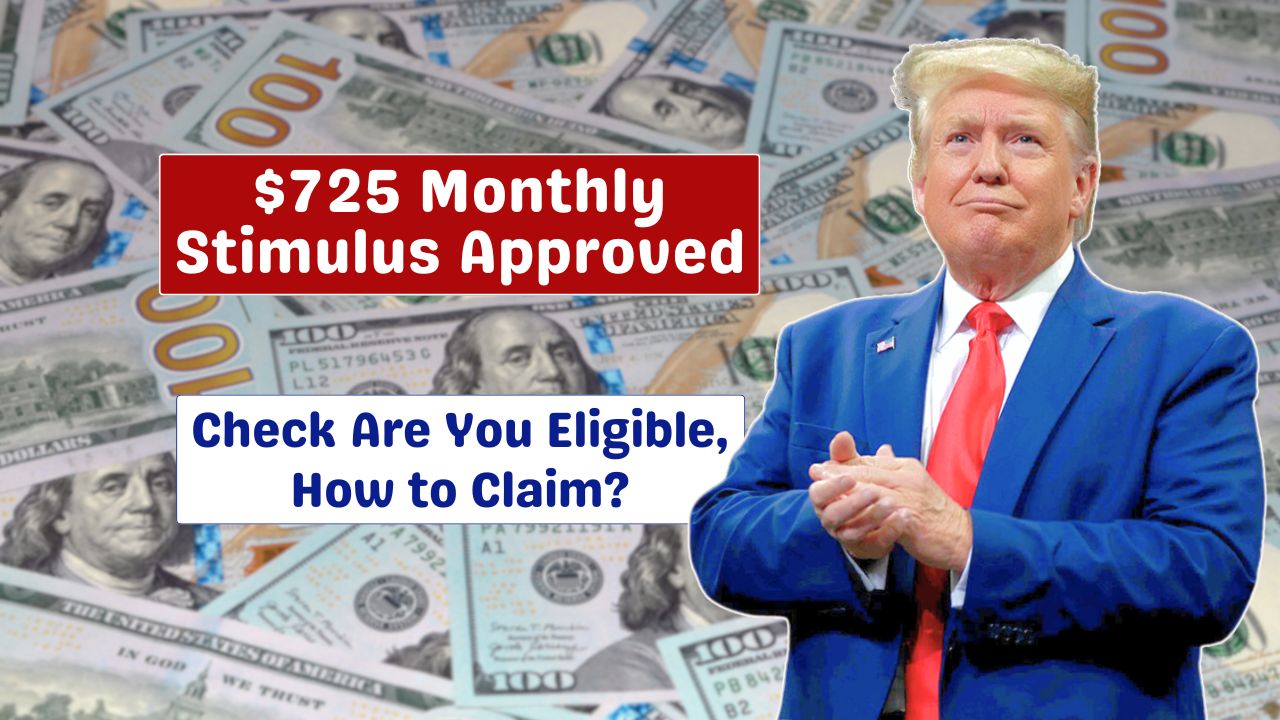$725 Monthly Stimulus Checks: Who Qualifies, When & How to Claim
In a time when inflation is biting into household budgets and the cost of living continues to rise, financial relief is more important than ever. That’s why news about the $725 monthly stimulus checks is getting attention across the United States. Many are asking: who qualifies for this support, when will it arrive, and how can you claim it? If you’re one of the many Americans wondering whether this payment could help you, this article breaks it down in the simplest terms possible.
Let’s go through everything step-by-step so you can understand whether you’re eligible and how to get your money.
What Are the $725 Monthly Stimulus Checks?
These $725 monthly payments are part of a targeted relief program designed to help low- and moderate-income families deal with high living costs. Unlike the pandemic-era stimulus checks, which were sent to almost everyone, these monthly payments are more focused.
The idea is to give regular monthly help instead of just one-time payments. This gives families more stability and helps them plan their finances better.
These programs are being rolled out on a state level, meaning not everyone across the country will get them. Some states are leading the way, offering extra monthly support for specific groups like seniors, low-income families, or people with disabilities.
Who Qualifies for the $725 Stimulus Checks?
Qualifying depends on where you live and your personal financial situation. In most states offering this kind of payment, the following groups are most likely to qualify:
-
Low-income families – If your household income is below a certain level (usually based on the federal poverty line or state income brackets), you may qualify.
-
Seniors on fixed incomes – Many programs are specifically targeting elderly people who depend on Social Security or have limited pensions.
-
People with disabilities – Individuals who receive disability benefits or are classified as disabled may be included.
-
Unemployed or underemployed individuals – Some programs are helping people who lost work recently or who aren’t earning enough to meet basic needs.
-
Families with children – In some cases, households with dependents may be prioritized.
For example, in California and New York, local programs already exist to offer this kind of support. The qualification rules are slightly different in every state, so it’s important to check your local government or department of social services website.
When Will the Checks Be Sent?
There isn’t one nationwide rollout date since these programs are managed at the state level. However, most states have already started planning or are in the early stages of distribution.
In places where the programs have already launched, the first checks were sent out in early 2025, and payments will continue monthly. If you apply now and meet the requirements, you could start receiving payments within a month or two, depending on your state’s processing time.
Here’s a quick overview of what to expect:
-
Application period: Varies by state, but many are open now.
-
Approval time: Could take a few weeks for your application to be reviewed.
-
First payment date: For those already approved, payments are going out in April and May 2025.
-
Ongoing monthly payments: Once approved, you’ll receive the $725 each month as long as you remain eligible.
How to Claim the $725 Monthly Payment
Claiming this benefit isn’t automatic. You need to apply. Here’s how you can go about it:
-
Check your state’s eligibility requirements – Visit your state’s official website or call the Department of Human Services or Department of Social Services.
-
Gather your documents – You’ll likely need proof of income, ID, Social Security number, and details about your household (number of people, dependents, etc.).
-
Apply online or in person – Many states offer an online application portal. Some allow you to apply through local community centers or government offices.
-
Wait for approval – After you apply, your information will be reviewed. If you qualify, you’ll be notified, and your payments will start soon after.
-
Set up direct deposit – To get your money faster, link a bank account. Otherwise, you might get a debit card or paper check.
What If Your State Doesn’t Offer It?
Not all states have adopted this monthly stimulus program yet. If your state isn’t offering $725 monthly payments, here are some things you can do:
-
Look for alternative support programs – States often offer other financial help, like rental assistance, food aid (SNAP), or energy support (LIHEAP).
-
Contact local charities or community centers – These organizations may be able to direct you to other forms of help.
-
Keep an eye on policy changes – Programs can change. Even if your state doesn’t offer it now, they might launch something in the future.
Can You Lose Eligibility?
Yes. If your income increases, you move out of state, or you no longer meet the requirements (like your child turns 18 or you start earning more), you might lose eligibility. That’s why it’s important to report any changes to the office handling your payments.
In some cases, if you receive payments you’re not entitled to, you may be asked to repay them. So, it’s better to stay honest and keep your application information updated.
Final Thoughts
The $725 monthly stimulus checks are a meaningful lifeline for many Americans struggling to stay afloat. While not everyone qualifies, those who do can get real help covering bills, rent, groceries, and other essentials.
The most important thing is to check your local rules, apply as soon as possible, and stay informed. It may take some effort to apply, but the reward—a monthly check—can bring real peace of mind during tough times.


